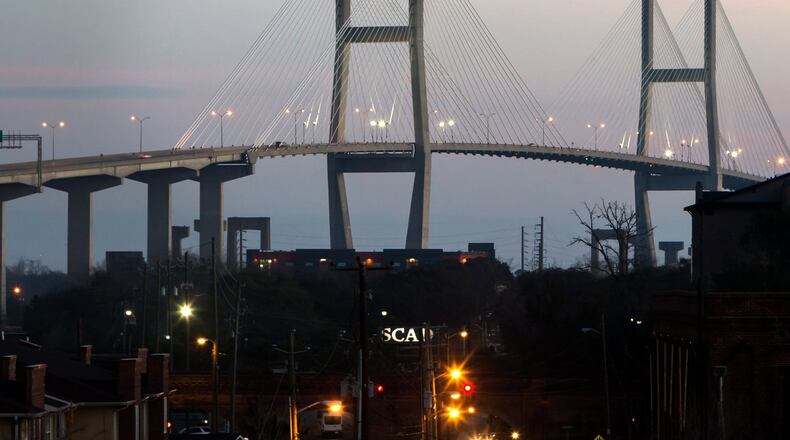How many times are we going to repeat the same mistake?
The Savannah Bridge is in the wrong location. To rebuild the bridge or place a tunnel in the same footprint as it stands today will repeat a serious error made twice before that significantly damaged our city. Let’s not do it again.
In the 1950s, the Interstate 16 highway and Talmadge Bridge were built, extending the massive highway too far into the heart of our city and creating a barrier between downtown and west side neighborhoods of Carver Heights, Carver Village, Cloverdale and West Savannah. In the 1990s, when the new suspension bridge was built in the same spot as the old, the problem was made far worse by tying I-16 directly into U.S. Route 17, bridge thereby further cementing the division between downtown and Savannah’s west side.
Credit: Handout
Credit: Handout
We must now think outside the box and avoid making the same mistakes a third time.
If the Georgia Department of Transportation is successful in getting the money to pay for a multibillion-dollar replacement of a relatively young bridge, the new river crossing should be off the Truman Parkway on the east side of the city, which is the main north-south artery allowing direct access for the largest concentration of city residents.
Rebuilding a river crossing in the existing west side location will only increase the damage to our city. Building a crossing off the Truman would bring tremendous positive opportunities to remove the divide between neighborhoods on the west side, spur the canal district into a reality, help solve car and truck traffic through the historic district, create a walkable/bikeable connection to Hutchinson (if an east-side tunnel is built), solve long-deficient evacuation routes, free up more than 100 acres for new west side development, create a beautiful entrance to the United States’ most beautiful city and much more. An opportunity like this comes around once every few generations, and we must not miss it.
For the past five years, I’ve been actively and openly promoting the east side alternative plan — crossing the river from the Truman Parkway — should this project proceed. When I learned that tearing down the bridge was open for public comment and nearly no one knew it was happening, I became alarmed.
I immediately started “A Bridge Too Far” campaign to raise people’s awareness. Since my years of efforts to spread this idea seemed to have fallen short and time was limited, I thought a public campaign might help to alert people to what was happening. This effort seems to have worked: People are finally talking about it.
Now we need to keep it on our radar. Projects like this can take a life of their own such that one day they just start building without full public awareness. We cannot let that happen.
I’m sure some will say I’m only doing this for our own business. Our company owns two of the 16 industrial companies on Savannah’s east side. Collectively, these companies employ more than 1,000 Savannahians and are always looking to improve traffic flows. Yet, it is undeniable that an east side river crossing will massively benefit the entire community while also allowing the port of Savannah to continue receiving large ships. It solves 10 issues instead of just one. A new bridge or tunnel on the west side only addresses one problem — big ships — while continuing to damage the surrounding communities and missing out on huge improvements benefiting the entire city. Why repeat the same mistake? An east side river crossing helps to solve many issues for many people.
If a new tunnel or yet another bridge is built on the west side, we will live with it for generations to come. Haven’t we finally learned from the years of damage from poorly placed infrastructure? Hasn’t the concrete scar separating our communities and taking up precious west side green space lasted for long enough?
The good news is that there is a better way. Please take a moment to review this concept and deeper analyses at www.abridgetoofarsav.org and join us in helping our city move forward rather than staying stuck in the past repeating the same mistakes again and again.
Reed Dulany III is chairman and chief executive of Dulany Industries.
About the Author
Keep Reading
The Latest
Featured



